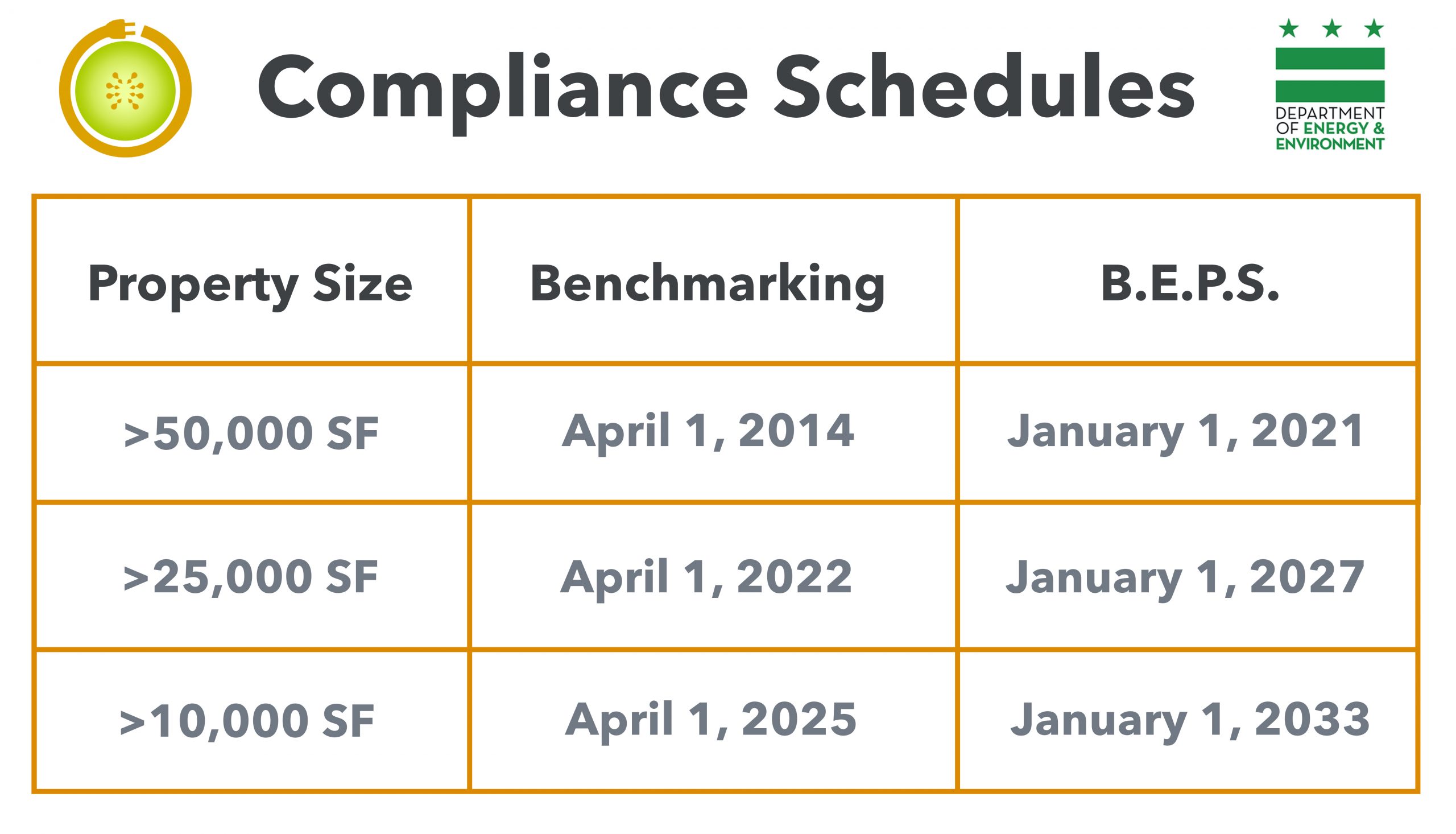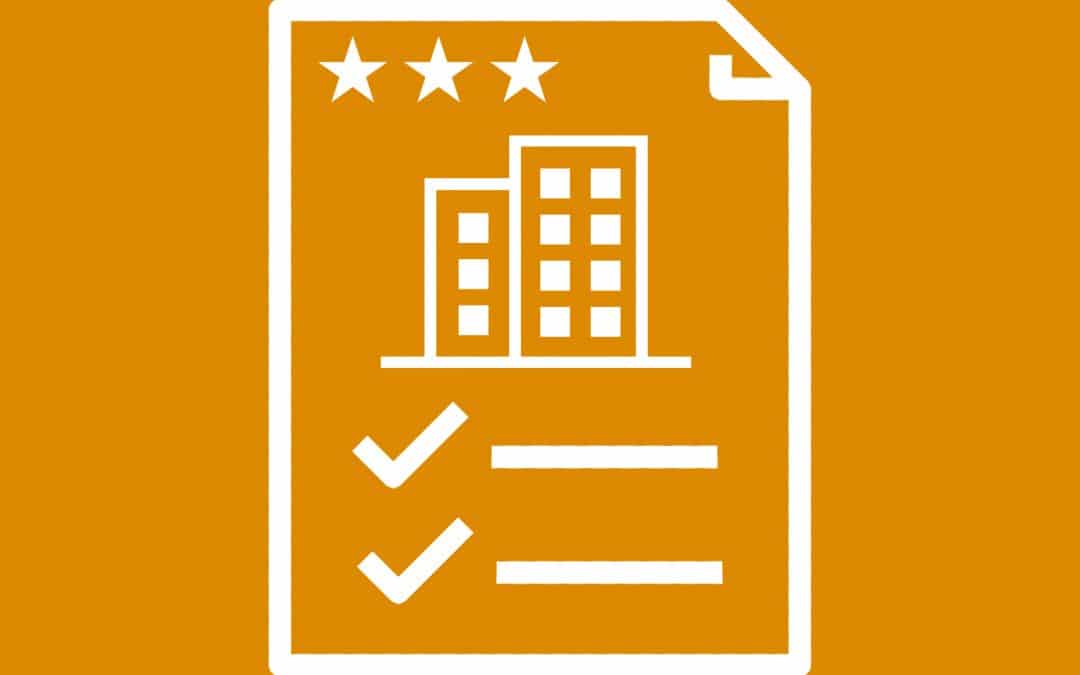As a property owner or manager in District of Columbia, the most important new regulatory system you should be aware of for 2021 is the Building Energy Performance Standards or BEPS. BEPS was a major aspect of the 2018 Clean Energy DC Omnibus Act and established one of the first minimum thresholds for building efficiency in the nation. The first set of standards, BEPS 1, applies to buildings over 50,000 square feet, kicks off on January 1st, 2021 and is administered by the DC Department of Energy and Environment (DOEE).
Branch Chief Katie Bergfeld, of DOEE’s Building Performance and Enforcement Branch, characterizes the program’s significance as such: “Building energy consumption accounts for 74% of the District’s Greenhouse Gas Emissions. BEPS is one of our key policy tools to help the District meet the energy and climate goals of the Mayor’s Sustainable DC 2.0 plan”
What is the difference between Benchmarking and BEPS?
Let’s distinguish the BEPS initiative from Benchmarking.
- Benchmarking is the process of measuring building energy performance
- BEPS is actually doing something about it.
Though they are interrelated, requirements kick in on different schedules, per the table below:

Benchmarking statistics are given through your property’s ENERGY STAR Score. This score shows how your building’s efficiency compared to similar building’s nationwide. For example, a score of 10 would indicate that your property is on the bottom 10% of efficiency compared to similar buildings nationwide, whereas a score of 90 would mean it’s one of the top 10% nationwide. It uses the ratio between the amount of energy that goes into your property to the amount of space within the property as a basis of comparison. The score incorporates factors such as climate zone and space type (e.g., commercial office, multifamily, retail, etc.) to normalize data for business activities. BEPS uses the ENERGY STAR Score to develop the standards for energy efficiency.
What is the standard ENERGY STAR score for my building type?
DOEE has not yet set specific minimum ENERGY STAR score standards for each property type for the first cohort of buildings subject to this regulation, but expect it to be above the median 2020 ENERGY STAR scores (which use 2019 utility data). The precise standard will be released in early 2021. For example, if the local median 2020 ENERGY STAR score for a multifamily building is 64, then the “standard” for that property type is 64 under this program.
What if my building falls below the standard score?
If the building falls below the threshold, they must follow one of the following compliance pathways over a 5-year compliance period to avoid penalties:
Performance Pathway:
- Gist of it: Reduce the property’s energy usage by 20%
- Details: Reduce the property’s average Adjusted Site Energy Use Intensity (EUI) averaged over the last 2 years of the Compliance Cycle by 20% as compared to the Adjusted Site EUI averaged over the two years preceding the first year of the Compliance Cycle
- For example: For BEPS 1, DOEE will compare the Adjusted Site EUI from calendar years 2019 and 2020 to the Adjusted Site EUI from calendar years 2024 and 2025.
Standard Target Pathway:
- For property types for which the standard is above the national median, reach the standard for your property type.
Prescriptive Pathway:
- Implement cost-effective energy efficiency measures from a list provided by the BEPS task force and DOEE.
Alternative Compliance Pathway:
- Allows an owner to apply to follow a pathway with special criteria agreed upon by DOEE and the building owner designed to achieve energy savings comparable to the Performance Pathway.
How can I increase my ENERGY STAR Score?
So what types of improvements have the biggest bang for your buck? While this depends highly on your individual circumstance and property type, we’ve generally found that the following types of improvements have the highest returns on investment or include no-cost upfront financing options:On Site Solar PV
- LED Lighting
- Water fixture replacement
- Insulation
- Building automation, calibration, and retrocommissioning
If you’ve got older equipment at the end of its expected lifespan, investments in high efficiency windows and HVAC equipment can provide big boosts to your score.
How Honeydew can help (Free BEPS Webinar)?
If you’re looking to boost your ENERGY STAR score and get ahead of the BEPS, please fill out the form below, and we’ll put together a tailored solution for your building starting with a comprehensive energy audit. Once we receive more details about this program (ie, updated ENERGY STAR score standards for each property type, penalty amounts for noncompliance, etc.), we’ll update our BEPS page with the latest information. We also plan on hosting a free webinar on June 3rd, 2021 at 11am that will help educate and inform building owners and managers about the specific requirements and possible solutions to make sure your building complies with the new regulations. In the meantime, fill out the form in this link to sign-up for the upcoming webinar and stay updated with any new information regarding the BEPS program.

